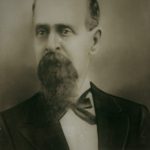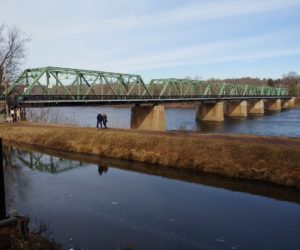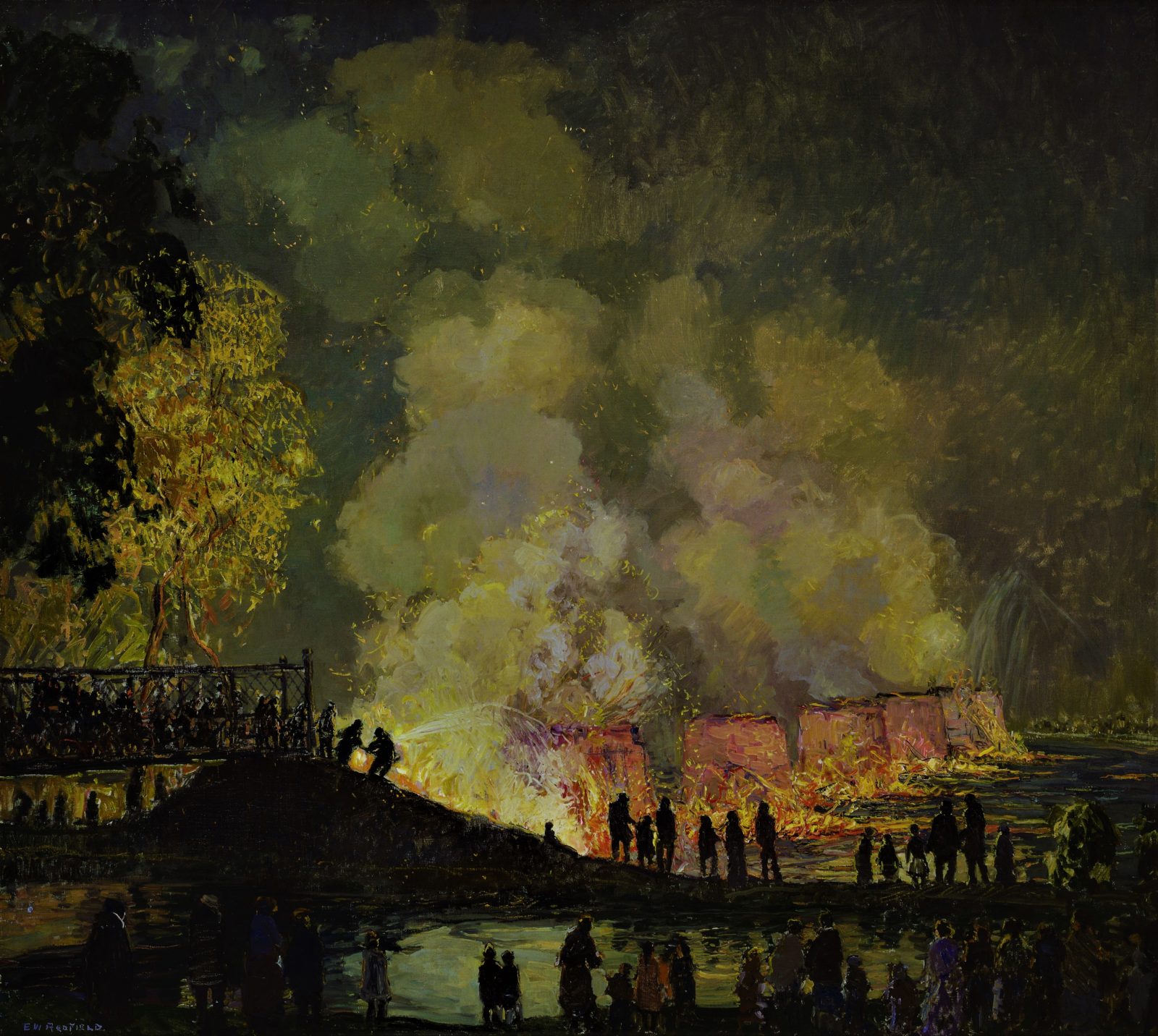The drama and disaster of the Centre Bridge fire.
I know a thing or two about covered bridges. I certainly ought to. My 5th generation grandfather Henry Grow of Montgomery County was a regional covered bridge builder in the mid-1800s. The Ardmore architect was very successful, eventually taking him to Salt Lake City where he designed and built the famous Mormon Tabernacle. Using his patented bridge truss technique, he constructed what he considered the largest assembly hall in the world, capable of seating 9,000 under a dome with no visible su

pports. That’s in addition to the first suspension bridges over Utah’s rivers.
I didn’t know any of this until I moved here from California via Florida in the 1970s. My curiosity about the history of Bucks County’s covered “kissing bridges” led me to Henry. Bucks was once loaded with the type he built – more than 50, now just 12. Shingle roofing protected the underlying wooden ramps from rain, snow and ice. The first covered bridge to cross the Delaware River was in 1806 between Morrisville and Trenton followed by another at Easton that same year. The third came about in 1814 to carry York Road over the river from Solebury to Stockton, N.J. Since it was midway between Easton and Morrisville, the toll span became Centre Bridge. Severe flooding in 1841 required extensive repairs to what were eight interconnected covered bridges sitting on six stone river piers making Centre Bridge the longest of 16 linking New Jersey and Pennsylvania. In the flood of 1907, it alone survived.
Then Sunday evening of July 22, 1923 arrived.
A powerful thunderstorm crossed Solebury from the west. As the front approached Centre Bridge, lightning hit the upstream portion near the Pennsylvania shore, setting the roof on fire. Flames spread with red hot intensity driven by high winds with too little rain. Firefighters from New Hope raced to the scene and poured water on the Pennsy side of the bridge to protect a barn owned by Bucks County artist Edward W. Redfield. He stood nearby behind the Centre Bridge Inn facing the Delaware Canal and river where he could safely view the fire as it roared toward Stockton. He jotted impressions on an envelop.
Across the river, Stockton firemen stretched a water hose onto the bridge

and bravely fought the firestorm from inside. A glowing cascade of flaming timber rained down on the river. Bridge electrical wires from Pennsylvania snapped, causing a blackout in Stockton. Volunteers were able to save Redfield’s barn. But the battle from Stockton wasn’t going well. Firefighters fell back span by span as the conflagration approached in cyclonic fury. Still pumping water, the brigade made a final stand under the canopy of the last span when it gave way. As one newspaper reported, “After the structure went down, it struck on rocks and sand bars and one end was crushed like an egg shell.” Eight firemen and eight volunteers disappeared into the void 30 feet below. City residents scrambled down the river bank, desperately searching for the men. Citizens pulled one from the wreckage with a broken collarbone plus head, arm and shoulder lacerations. Another had a nail through his foot. Most incurred painful bruises and twisted limbs. Miraculously no lives were lost.
The only photo taken during the disaster was of smoldering ruins the day after. Fortunately eyewitness Redfield and his note-covered envelop remained. At age 54, he was one of America’s most gifted artists, internationally known as co-founder of the celebrated New Hope art colony and Pennsylvania Impressionism. He was a master at painting snow scenes on huge canvases. One biographer commented, “He would stand outside in snowy weather for eight hours at a time, filling his canvas at ‘one go’ to capture the immediacy of the scene before him with rapid strokes of thick impasto. The paintings display a vigorous realism and capture the glaring, reflective quality of snow.”
That skill came into play in the aftermath of the Centre Bridge disaster. Using his notes, Redfield recreated the flaming spectacle in oil on canvas measuring 5 feet across and 4 feet high. The painting was breathtaking. Meanwhile, a bi-state panel – the predecessor to today’s Delaware River Joint Toll Bridge Commission – rebuilt Centre Bridge as a toll-free span made of steel and built atop the original river piers. Today, vehicles dart over alongside a walkway where pedestrians linger to admire the scenery and breathe fresh air out over the river.

Redfield passed away in 1965 at age 96. The barn that firefighters saved has been converted into a residence. The artist’s painting of the great fire remains in the permanent collection of the Michener Art Museum in Doylestown where patrons can absorb what he witnessed 97 years ago whenever the painting is on display.
Sources include “90th anniversary of historic Center Bridge fire approaches” published by the Hunterdon County (N.J.) Democrat on July 12, 2013 and a biography of artist Edward W. Redfield found on the internet at http://www.hollistaggart.com/artists/redfield.htm

